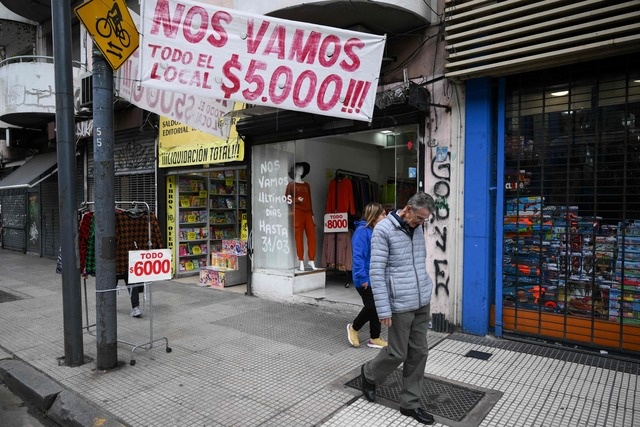Buenos Aires. Argentina’s economic activity fell 3.2 percent annually in February and 0.2 percent compared to January 2024, accumulating four months with a declining trend, the National Institute of Statistics and Censuses (Indec) reported on Tuesday.
Eight sectors of activity registered falls in the annual comparison, among which construction stands out, with a decline of 19.1 percent; financial intermediation, with a drop of 12.1 percent, along with the manufacturing industry, which fell 8.4 percent and wholesale, retail and repair trade, which fell 5.5 percent.
Compared to the same month in 2023, seven sectors registered increases in February, including fishing (31.6 percent) and mining and quarrying (11.7 percent).
Economic activity had fallen 4.5 percent annually in December and 4.3 percent in January, according to data from Indec itself.
“It is felt that there is a strong decline in the market, many clients tell us that they are not selling anything, very little, and they have merchandise in stock for many months with low turnover,” Belén Lo Russo, manager of foreign trade of Taller Baigorria, a family metallurgical company that manufactures screws and fastening elements especially for the automotive market.
On Monday night, President Javier Milei had celebrated as a “historic feat” the first quarter with a fiscal surplus that Argentina has recorded since 2008.
The Indec data, added to an inflation that reaches almost 290 percent annually, reflect a scenario of “stagflation” (inflation and recession) that Milei himself had predicted when assuming the presidency last December.
Economist Carlos Rodríguez, a representative of the Center for Macroeconomic Studies of Argentina (CEMA), told the newspaper La Nación this weekend: “We are heading towards an economic depression and I don’t see how the fall in investment is going to be recovered.”
The International Monetary Fund itself, of which Argentina is the largest debtor, as well as the World Bank more recently, have called the attention of the Argentine president so that the harshness of the adjustment does not affect “the most vulnerable.”
Indec places the poverty rate for the second half of 2023 (the latest data available) at 41.7 percent, while a study by the Catholic University estimates poverty in January at almost 57 percent.
The activity index is released on the same day that a massive student march against the budget adjustment in public universities takes place and on the eve of another mobilization called for May 1 by the labor confederations.
#Economic #activity #Argentina #falls #February
– 2024-05-02 17:06:52


